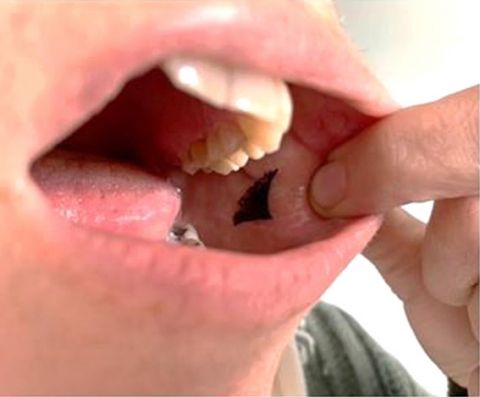According to the American Diabetes Association, approximately six million Americans use insulin to help control their diabetes, either because their bodies do not make the hormone (Type 1) or do not respond well to what they do make (Type 2). People primarily take insulin by injecting themselves with pens or syringes, or they have semi-permanent pumps implanted, but these methods are invasive and uncomfortable. Further, the pens and syringes must be kept sterile and must be disposed of safely.
Researchers have explored other vehicles, such as gel-like lotions, to deliver insulin through the skin, but these are absorbed too slowly. By contrast, the membrane lining the inside of the mouth is very thin, making it a good site for drugs to enter the bloodstream easily.
Professor of Chemistry at the University of Lille, Sabine Szunerits, hypothesised that a material she had previously developed — a nanofibre mat that releases drugs in response to increases in temperature — could be stuck to the lining of the cheek to deliver insulin.
To test the theory, Szunerits and her colleagues first soaked small squares of the nanofibre mat, which is made from electrospun fibres of poly(acrylic acid), β-cyclodextrin and reduced graphene oxide, in a solution containing insulin for three hours. The team then applied the insulin-loaded patches to the cheek linings and corneas of pigs. Heating the material with a near-infrared (IR) laser for 10 minutes to 50°C (122 degrees Fahrenheit) activates the material and releases insulin into the two membranes several times faster than through skin.
Further, the researchers placed the patches in vivo inside the cheeks of three insulin-dependent pigs. The cheek linings showed no irritation or visual change caused by the heat of the laser. As soon as the material was activated, the pigs’ blood-sugar levels declined. Simultaneously, the animals’ plasma-insulin levels increased, which the researchers say is proof of the concept that this preliminary platform is efficient at getting insulin into the bloodstream.
Finally, six human volunteers placed a placebo version of the patch inside their cheeks, and reported that it felt comfortable over a two-hour period.
The researchers now plan to conduct further pre-clinical studies of the prototype on animal models.

